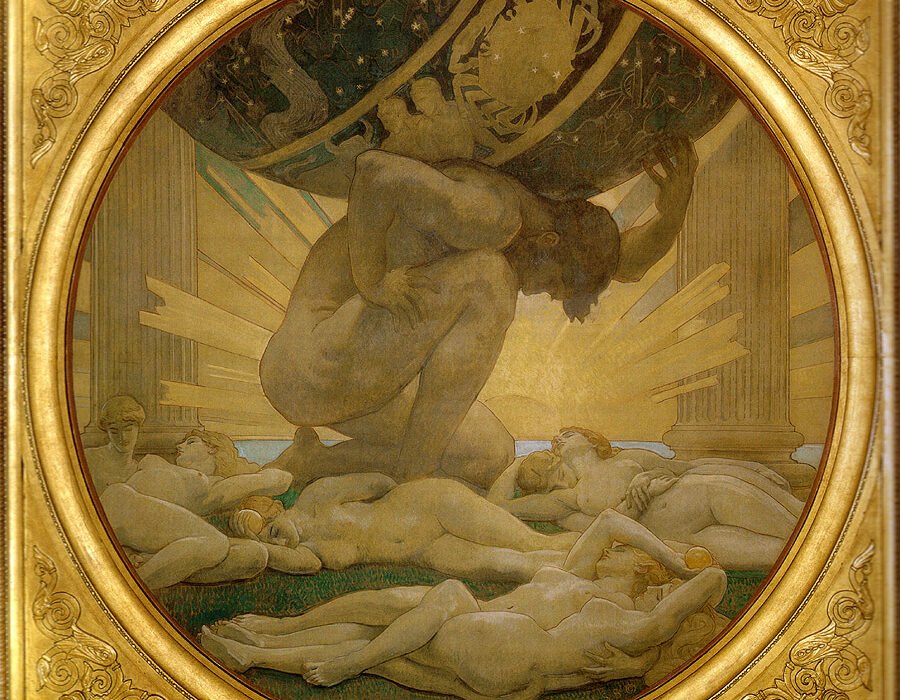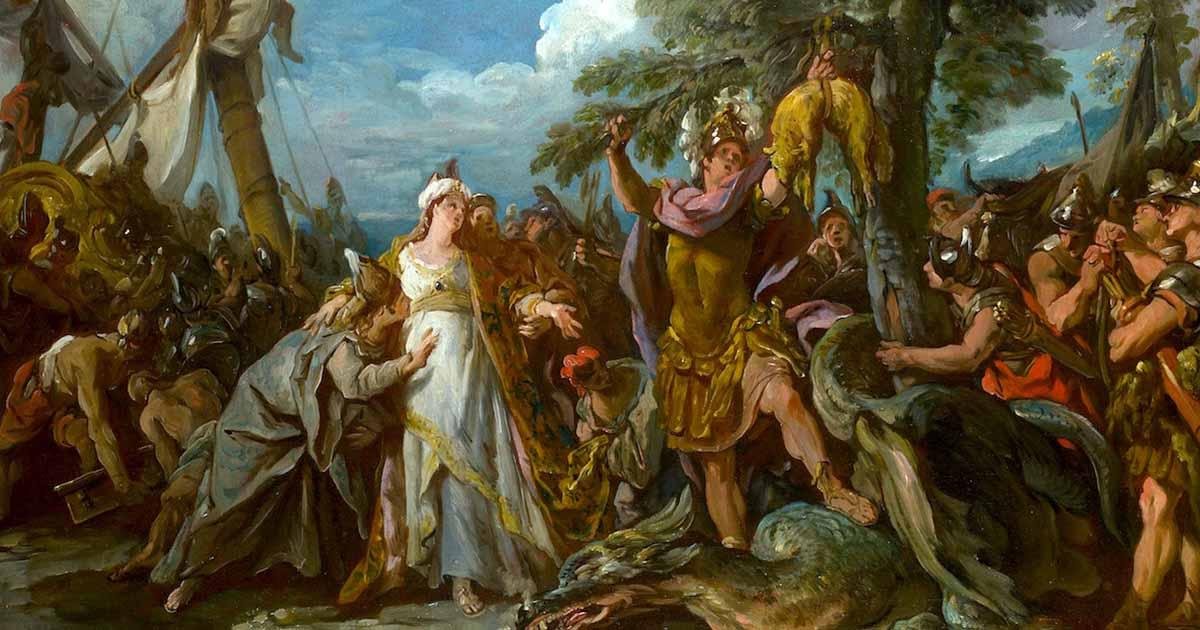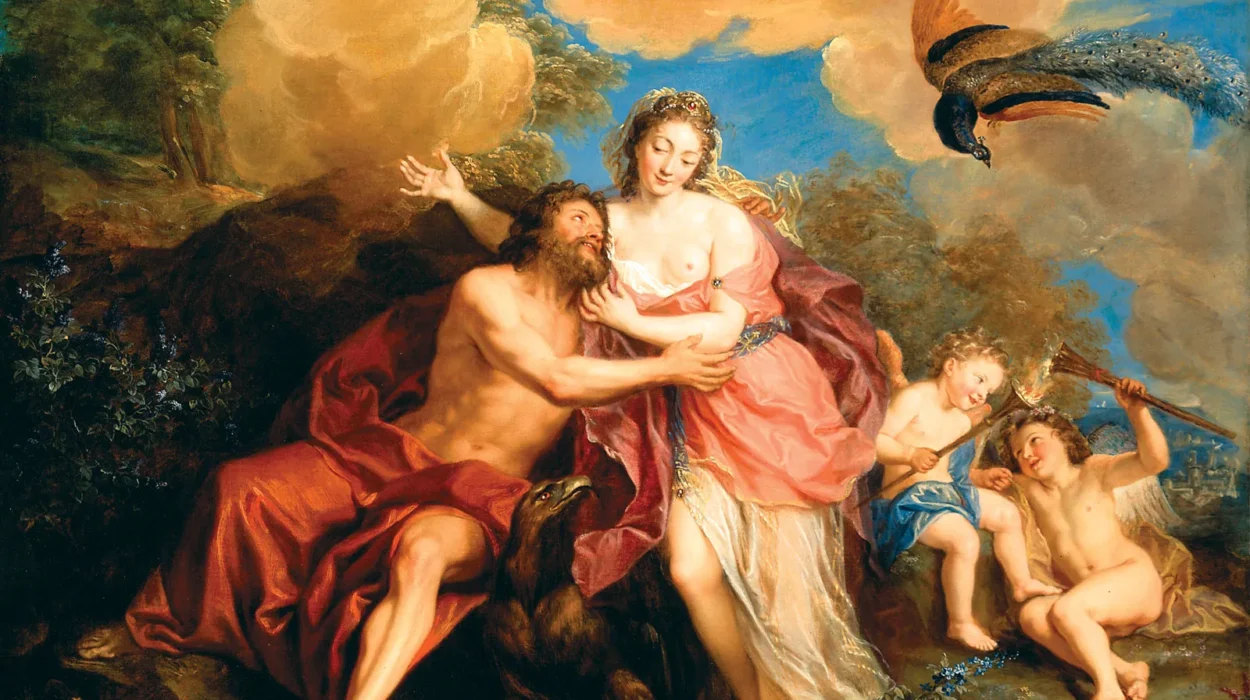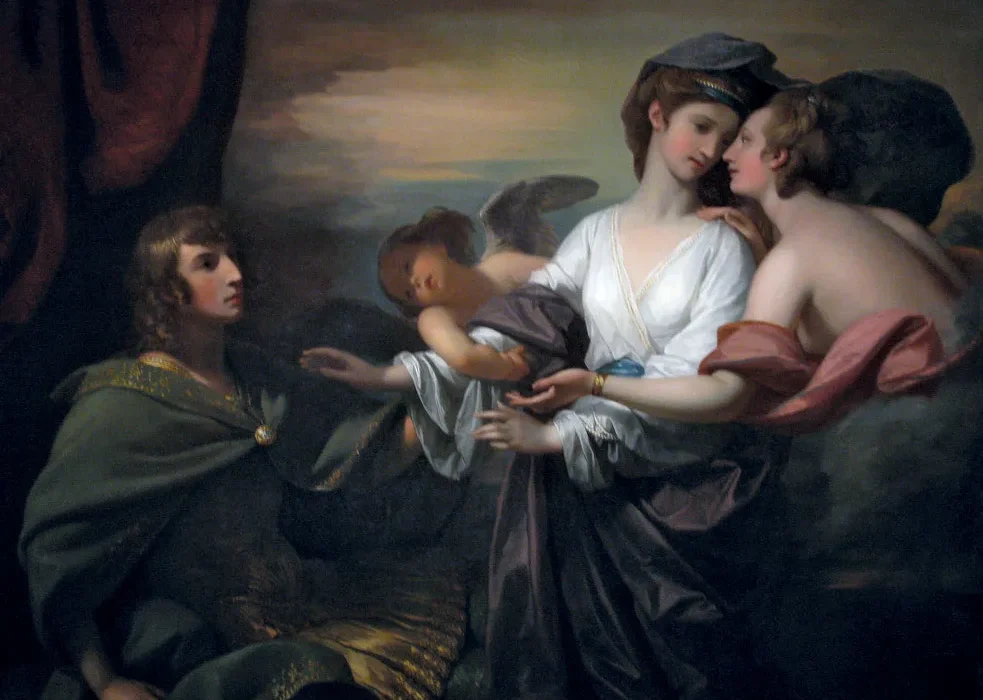In the vast tapestry of Greek mythology, few places inspire such dread and fascination as Tartarus. To the ancient Greeks, Tartarus was not simply a pit or a dungeon—it was the very embodiment of darkness and despair, a chasm deeper than the mortal mind could truly comprehend. While Olympus represented the pinnacle of divinity and Elysium the reward of bliss, Tartarus was the antithesis: the blackened heart of punishment, confinement, and terror.
To imagine Tartarus is to picture a pit beneath the Earth so far removed from sunlight that even hope could not reach its depths. Homer and Hesiod, the earliest Greek poets, described it as lying as far below the Earth as the Earth itself lies beneath the heavens. This unfathomable distance was not meant to be measured with steps but with fear. Tartarus was not merely a place—it was a cosmic boundary, a realm of divine justice where gods and mortals alike might meet their doom.
The Birth of a Primordial Abyss
In Greek cosmology, Tartarus was more than a location; it was a primordial force. According to Hesiod’s Theogony, Tartarus was among the very first beings to come into existence, emerging after Chaos, Gaia (Earth), and Eros (desire). Just as Gaia represented the fertile foundation of life and the heavens embodied divine order, Tartarus stood as the yawning gulf of despair—a necessary counterpart in the balance of creation.
To the ancient mind, existence itself demanded opposites: light and darkness, love and strife, order and chaos, Olympus and Tartarus. By situating Tartarus in the origins of creation, Greek mythology framed it not merely as a prison devised by gods, but as something older, deeper, and more eternal. Tartarus was not built; it was born.
This distinction matters. Unlike Hades, which later became the general realm of the dead, Tartarus was never about simple residence after death. It was a cosmic abyss with purpose, a place designed to restrain the most dangerous forces in the universe, both divine and monstrous.
Tartarus Versus Hades: Two Realms of the Dead
It is easy to confuse Tartarus with Hades, since both are associated with death and the underworld. But the Greeks drew a clear distinction.
Hades, named after the god who ruled it, was the shadowy realm where ordinary souls went after death. It was a place of gloom, yes, but also of neutrality. The souls of most mortals wandered its plains without great joy or torment, existing as shades in the twilight of eternity.
Tartarus, by contrast, was never intended for the common dead. It was a place of punishment and containment, a hellish abyss reserved for those who had committed crimes against the natural and divine order. The gods sent the Titans there after their defeat in the Titanomachy. Divine criminals, monstrous beings, and mortals guilty of unspeakable sins were hurled into its depths.
If Hades was the shadow of life, Tartarus was the bottomless pit where defiance against cosmic law was chained for all eternity.
The Titans in Chains
Perhaps the most famous prisoners of Tartarus were the Titans, the elder gods who once ruled before Zeus and his siblings seized power. In the great war known as the Titanomachy, the Olympian gods rose up against their predecessors, waging a battle that shook the very heavens.
When the Olympians triumphed, they faced a question of justice: what should be done with the defeated Titans? To kill them outright would be to destroy divine beings who were part of the cosmic order. Instead, Zeus chose a punishment more fitting—imprisonment in Tartarus.
The Titans were hurled into the abyss, their forms chained in darkness, surrounded by bronze walls and gates crafted by the hundred-handed giants, the Hecatoncheires, who served as their eternal jailers. In this act, Tartarus became not just a primordial entity but a dungeon of divine justice, a reminder that even gods could be humbled when they defied the new order of the cosmos.
Punishments of the Damned
Tartarus was not solely the prison of the Titans. It was also the eternal torment of infamous mortals who had committed crimes so great that death itself was not punishment enough. Among the most notorious were:
- Tantalus, who betrayed the gods by stealing ambrosia and nectar—or, in some accounts, by murdering his own son and serving him as a meal to the Olympians. For his crimes, he was condemned to stand in a pool of water beneath a fruit tree. Whenever he reached for food or drink, they receded from him, forever out of grasp.
- Sisyphus, the cunning king who cheated death not once but twice. His punishment was to push a boulder up a hill, only for it to roll back down every time he neared the summit. His labor symbolized futility itself, the endless repetition of a task without reward.
- Ixion, who attempted to seduce Hera, queen of the gods. His punishment was eternal entrapment on a fiery, spinning wheel, bound to revolve endlessly in Tartarus.
- The Danaids, fifty sisters who murdered their husbands on their wedding night (save one who spared hers). They were condemned to carry water in leaky vessels, their labor doomed to fail for all eternity.
Each punishment reflected the crime itself, illustrating how the Greeks saw Tartarus not merely as torment but as cosmic justice personified.
Guardians of the Abyss
The horrors of Tartarus demanded guardians of terrifying power. At its gates stood a bronze threshold, unyielding and indestructible, forged by the gods themselves. The Hecatoncheires—giants with a hundred hands and fifty heads—were charged with guarding the imprisoned Titans. Their sheer might made them perfect wardens, for none could hope to escape their grasp.
Tartarus was also watched over by Night (Nyx) herself, in some accounts, for the goddess of night was closely bound to the abyss. In later traditions, various daemons of punishment, such as the Furies (Erinyes), also held sway in its depths, ensuring that the wicked received the suffering they had earned.
This imagery reinforced the fearsome reality of Tartarus: it was not merely a hole in the ground but a fortress of divine retribution, designed to keep its captives forever chained in shadow.
A Geography of Fear
The ancients often spoke of Tartarus in terms that stretched the imagination. Hesiod described it as lying beneath the earth by a distance equal to the span between earth and heaven. To illustrate the point, he explained that if an anvil were dropped from heaven, it would take nine days and nights to reach earth—and another nine days and nights to fall from earth into Tartarus.
This staggering distance emphasized its remoteness and horror. Tartarus was a cosmic chasm, a place that defied human comprehension. It was imagined as surrounded by triple layers of darkness, its gates wrought of bronze, and its depths sealed by unbreakable bonds. To fall into Tartarus was not simply to fall underground—it was to fall outside the realm of hope, beyond the touch of gods and mortals alike.
Philosophical Interpretations
As Greek thought evolved, Tartarus came to hold not only mythological but also philosophical significance. For Plato and later thinkers, Tartarus was sometimes described as the ultimate pit of moral corruption, the destination of souls too tainted to ever be cleansed. In this view, Tartarus became less a literal place and more a moral necessity—a symbol of cosmic justice where wickedness could not go unpunished.
This moral dimension echoed across centuries, shaping later ideas of hell in Christian thought. Though vastly different in many respects, the concept of eternal punishment for moral corruption bears the unmistakable imprint of Tartarus’s shadow.
Tartarus Beyond Greece
The Greeks were not alone in envisioning such an abyss. Many ancient cultures imagined a place of deepest darkness, a realm of punishment or imprisonment for forces too great or too dangerous to roam free.
In Mesopotamian mythology, there was the underworld realm of Irkalla, where certain souls were condemned to eternal misery. In Norse cosmology, Niflhel and Helheim mirrored similar themes of punishment and despair. Later, Roman mythology directly adopted Tartarus into its cosmology, often describing it in works such as Virgil’s Aeneid, where the hero Aeneas glimpses its torments firsthand.
Thus, Tartarus became part of a broader human attempt to reckon with the darker side of existence: the need for justice, punishment, and the containment of chaos.
The Symbolism of the Abyss
To the ancient Greeks, Tartarus was more than myth. It was a symbol of ultimate boundaries: the boundary between order and chaos, between justice and rebellion, between life and annihilation. It reminded them that even gods were not beyond justice, that cosmic law demanded balance.
Tartarus also spoke to human fears—the dread of eternal punishment, the terror of being forgotten in darkness, the futility of endless suffering. Yet it also embodied a kind of reassurance. For if Tartarus existed, then so too did cosmic justice. The wicked would not escape. Order, though sometimes fragile, was always preserved.
The Eternal Echo of Tartarus
Today, Tartarus still resonates in literature, philosophy, and popular culture. Its imagery influences depictions of hell, abyssal prisons, and cosmic darkness in everything from Dante’s Inferno to modern fantasy and science fiction. The very word “tartarean” is used to describe something infernal, deep, and terrifying.
But beyond its mythic punishments and horrors, Tartarus remains a profound reminder of how ancient humanity grappled with justice, fear, and the unknown. It was not simply a place to terrify—it was a place to teach. In its depths, the Greeks saw not only monsters and chains but the eternal truth that actions, whether divine or mortal, carry consequences.
Conclusion: The Depth Beyond Measure
Tartarus endures in the human imagination because it embodies one of the most universal questions: What becomes of the irredeemably wicked? In the ancient Greek world, Tartarus was the answer, a pit deeper than thought, darker than night, older than the gods themselves.
It was where the Titans raged in silence, where arrogant mortals pushed their burdens forever, and where the cosmos stored its most dangerous forces. It was both prison and punishment, abyss and being.
To peer into Tartarus is to confront the shadow side of creation. It is to acknowledge that life is not only about growth, light, and order but also about restraint, consequence, and the eternal abyss that keeps chaos at bay.
And in this confrontation lies the enduring power of Tartarus: a mythic reminder that in every cosmos, there must be a depth beyond measure, where the lawless and the destructive are swallowed in silence forever.






